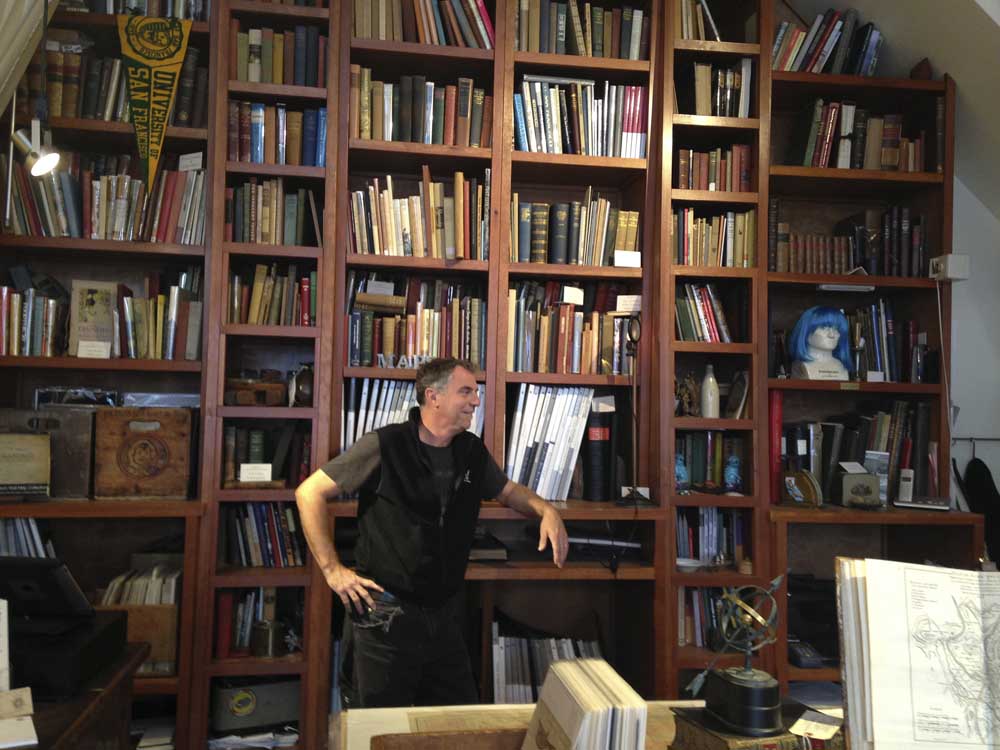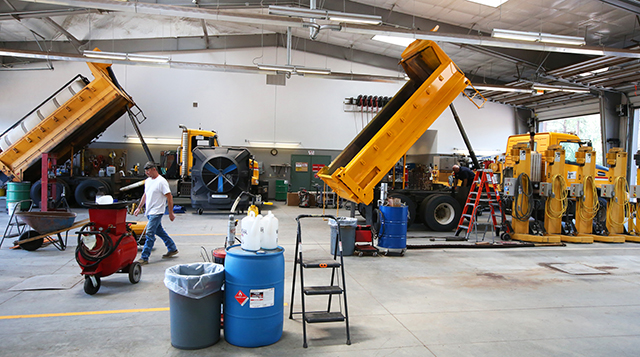X marks the spot for unique San Francisco map shop
Published 12:00 am Sunday, October 25, 2015

- Sam McManis / The Sacramento BeeSchein & Schein antique map shop owner Jimmie Schein formerly handled logistics for bands that included Metallica. He and his wife, Marti, own an antique maps store in San Francisco’s North Beach.
SAN FRANCISCO — Beyond the iron gates at 1435 Grant Ave., in the heart of San Francisco’s North Beach neighborhood, worlds await. Or, more precisely, intricate and painstaking charting of the world as we have known it, fluid and ever evolving. More than just paper-and-ink renderings, really, you’ll find nothing less than the story of our physical and emotional landscapes, writ both large and very, very tiny.
To call Schein & Schein merely an antique map and print shop fails to capture the scope of its breadth and appeal. What spouses Jimmie and Marti Schein sell are history and memories, guides to where we came from and, perhaps, where we’re going.
Trending
As soon as you cross the threshold, you feel transported.
It’s not just the burnished floor-to-ceiling shelves crammed with oversized atlases that can be plucked from on high only by way of ladders set on tracks and rollers. Nor is it the muted overhead lighting, augmented by a few laser-focused spotlights, that gives the setting an almost sepia tinge. Nor is it the air of orderly chaos — maps and vintage photos in protective sleeves sprouting from old produce crates, or rolled into tubes or placed in thin-drawered desks with hand-scrawled cards denoting regions and period.
There’s simply an air of reverence and preservation — nothing musty or sepulchral here, despite some cracked bindings and weathered pages that must be turned with utmost care — that permeates the place, personified by the hyper-intense, fast-talking infectious zeal of Jimmie, 52, who found his way in life through the collection, study and ultimately sale of maps.
Diverse background
Here’s a guy with an interesting backstory — as manager of a music logistics company, he toured for years with rock and jazz artists, doing everything from tuning instruments to driving a truck — who’d much rather enthuse about German lithographers Charles Kuchel and Emil Dresel than tell stories about hanging with Metallica and Miles Davis. No rock star excesses, even by proxy, for Jimmie. He spent his $800-a-week per diem hunting down vintage maps at antiquarian bookstores from Auckland to Zurich and many a middling American town. When, 12 years ago, he decided the romance of the road was waning, he took a buyout from his company and donned his rectangular spectacles to peer hard at lines on grids and share his passion with the public.
And the public, he and Marti say, has responded. The couple doesn’t make a killing, no expansion of Schein & Schein is in the offing, but, yeah, they do OK.
Trending
Even in this era when digital trumps analog in all things, there apparently is still interest in poring over the physical and tactile details of streets and landmarks, either still around or long since plowed under. The mutability of borderlines, be it cities, states or countries, tell a story that travels far beyond pixels on a screen showing you the best route to San Mateo.
‘We are maps’
“Without getting too existential,” said Jimmie, who then proceeded to wax existential, “maps are hard-wired into who and what we are. We are maps. We differentiate ourselves through language. What were the first things we discussed? Where we were. Where was danger. How we got there. How we got here. This is mapping. This is, in technical terms, the use of the hippocampus, the part of the brain that in fact is spatial memory and memory that allows us to recall both through the directional as well as the olfactory. All these tangential associations support mapping.
“That’s the lizard-brain stuff. We’re talking way back in our evolutionary chain. With that, then, we have a love of maps. Maps provide security. Maps provide perspective. Maps provide a sense of place. Besides, everybody wants a map of their own backyard. It shows them who they are.”
Quite a soliloquy for an ex-roadie, you might think. But Jimmie lifts with his head as well as his knees. He grew up the son of academics. One brother, Richard, is the chairman of the geography department at the University of Kentucky. His other brother, Chris, is a landscape architect in Baltimore. Jimmie is a proud, roll-up-your-sleeves autodidact.
“They did the hard grind of 10 or 15 years writing doctoral theses and all that,” he said, smiling slyly. “Me? I toured.”
And collected maps — mostly maps of California and the United States, though his stash also encompasses vast swaths of Europe, Asia, Africa and even the polar regions. But it’s San Francisco, Sacramento and the Sierra regions that drive sales and engross Jimmie the most. He can deliver disquisitions, mainly from memory, on most of what’s charted on the hundreds of maps filling cabinets, boxes, shelves and lining the walls. Prices range from $5 to $50,000, but Jimmie doesn’t like to dwell on monetary concerns. That cheapens the intrinsic value of each map, though there are a few that, he says, “really belong in the Bancroft” (Library, at the University of California, Berkeley).
Two such maps, framed, hang over the cash register. One depicts a faded drawing of Sausalito from 1868, with the cursive quill annotations by Navy Adm. George F. Emmons, who signed the surveyor map a few months after witnessing the Alaska Purchase signing on his ship. The other is the first map of Mission San Jose (in what is now Fremont), drawn in 1868 by Bay Area surveyor W.F. Boardman, whom Jimmie speaks of almost in reverence.
Marti has her favorites, too. One is James Whistler’s — yes, he of “Whistler’s Mother” artistic fame — depiction of Anacapa, one of the Channel Islands in Southern California, for the government in 1854. Etched into the otherwise straightforward steel-engraving were a tiny flight of birds. Turned out, his employer wasn’t thrilled with the artistic flourish and fired Whistler, who fled to England and became established as an artist.
“I could just picture him saying to the government, ‘You’re stifling my creativity,’” Marti said.
A form of art
The Scheins consider maps a legitimate art form. Jimmie, in fact, holds many so dear to his heart that he sometimes has a hard time letting go, though he jokes that some customers give him visitation rights.
“Now, he just hides some things away, but in the beginning, people would say, ‘OK, I want to buy this,’ and Jimmie’d say, ‘Oh, yeah, that’s not for sale,’” Marti said. “I’m taking him aside and going, ‘I know it’s hard, but you’ve got to part with it.’ This is a business.”
It is a business that survives, but for how long? Jimmie wistfully recalled the days when “in every city, there were two or three places like this,” to scavenge for maps. He does not despair, though, when looking ahead.
“The youthful population is looking for the unique and the individualized in a mass-produced world of the trite and the digital,” he said. “They use maps more than you and I ever did — on their phone. But that’s ephemeral and not worthy of the paper you’d print it on. But I do find they’re interested in conceptual mapping, geo-spatial mapping or statistical overlays, like where the sewer lines run, or three-dimensional paradigms. Maps won’t go away. They’ll just change.”








